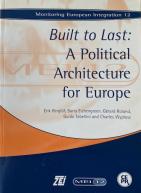Monitoring European Integration
MEI 3: Is Bigger Better? The Economics of EC Enlargement
This Report examines the enlargement of the European Community to include the EFTA members and the Central and East European Countries (CEECs). It considers first the significant economic benefits to the EFTA countries of concluding the EEA Agreement and their political and economic motivations for applying for full EC membership. It contrasts the negligible gains to the EC from the EEA with the substantial gains from the EFTA countries' full membership. It examines the likely time-period and extent of EFTAn enlargement, predicting an EC of 17 by 1996.
The Report then assesses the CEECs' accession to the EC: their political preparedness; their wealth relative to the EC average; their size and per capita incomes; and hence their transfer requirements. Before they can realistically consider full accession, the CEECs must stabilize their economies, rationalize their institutions and achieve decades of above-average economic growth. The EC can facilitate this process by raising demand for their output in traditional - especially agricultural - as well as sophisticated sectors. The Report assesses the migration potential of CEEC workers and proposes steps to ease such pressures.
Finally, the Report considers the implications of enlargement for the Community's institutions. The 'threshold level' of the number of Community members for the efficient operation of its decision-making bodies has already been reached, so further widening cannot proceed without further deepening.


